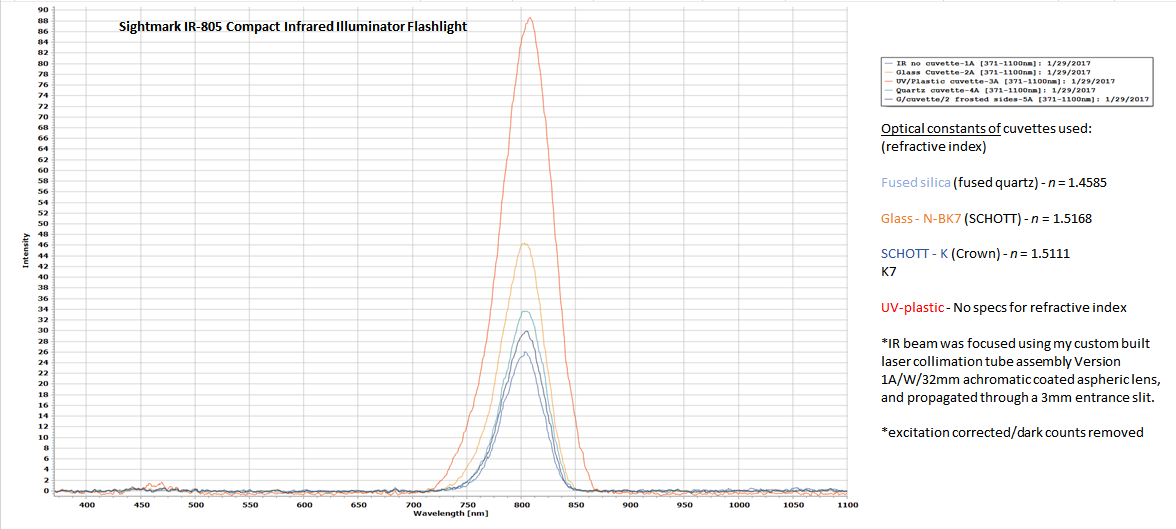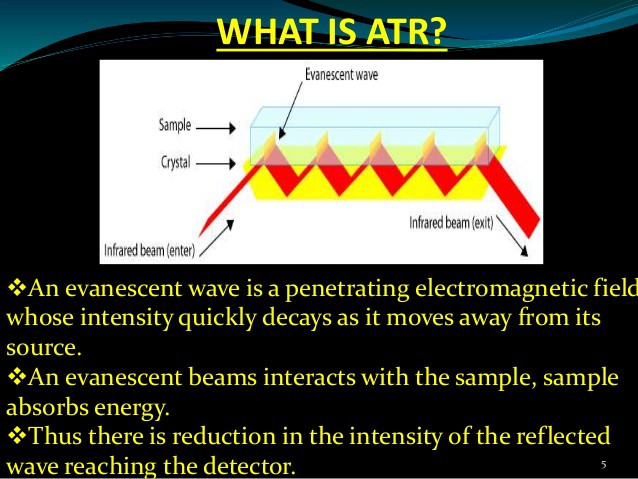I wanted to do some experimenting with an IR flashlight of mine to see if in the future, I may be able to adapt it for ATR (.) Why ATR? ATR generally allows little or no sample preparation, which greatly speeds sample analysis. It allows very thin sampling pathlength and depth of penetration of the IR beam into the sample. Useful for samples that are too thick to be analysed by transmission and those that strongly absorb radiation.



 Reference;
Reference;
http://www.slideshare.net/samikshasawant146/attenuated-total-reflectance-spectroscopy
 David H Haffner Sr
David H Haffner Sr
Discussions
Become a Hackaday.io Member
Create an account to leave a comment. Already have an account? Log In.
My girlfriend tells me that last paragraph may come out harder than intended. What I mean to say is that you should take care that your project doesn't go off on a tangent.
Are you sure? yes | no
Hey esben, no problems, I understood what you mean't. That's why this was just something that kind of sidelined me but will not pull me away from my main direction.
Are you sure? yes | no
We have an ATR FTIR spectrometer at work and it has made IR a /very/ easy characterization technique. However it didn't come without a price. Literally. The ATR-accessory is expen$ive as the sampling window is made of diamond. You can get a "cheap" one made of ZnSe. These crystal plates are of course made for transmission at 500-4000 cm⁻¹ where glass (BK7, quartz etc) is opaque.
However easy to use, the ATR technology gives inferior spectra compared to well made KBr-pellet spectra in many respects.
I wonder if it will be worth it for you to expand your spectrometer with this technique. A technique specifically developed to overcome the difficulties with sample preparation associated with IR e.g. uniformity, water free, pellet pressing. Because AFAIK none of these problems are present in the (very near) NIR.
If I were you, I would focus on a "normal" sample spectrometer (in fact that's what I'm doing, and leaving IR to the real professionals at [insert own research heavy spectrometer manufacturer]).
Are you sure? yes | no
Hey esben, yes I agree whole heartedly with your assessment, I am just experimenting and after price sourcing even the Zinc Selenide ($500.00 minimum,) for a 25 x 25mm sample, there is just too much cost involved and the sample platform is very complicated and I'm not even sure I could manufacture one that would work properly.
This is just a far off "maybe" project anyway, I am laser focused on my present spectrometer and determined to have it operational by summer.
I have also saved some of your work on the subject, I found it online; http://erossel.wordpress.com/
It was very helpful :)
Are you sure? yes | no